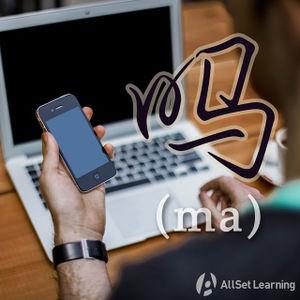Difference between revisions of "Questions with "le ma""
| Line 49: | Line 49: | ||
</div> | </div> | ||
| − | |||
| − | |||
Finally, please note that this pattern is nothing more than the combination of the [[expressing completion with "le"]] pattern and the [[Yes-no questions with "ma"|yes/no questions with "ma"]] pattern. | Finally, please note that this pattern is nothing more than the combination of the [[expressing completion with "le"]] pattern and the [[Yes-no questions with "ma"|yes/no questions with "ma"]] pattern. | ||
| Line 58: | Line 56: | ||
*[[Expressing completion with "le"]] | *[[Expressing completion with "le"]] | ||
*[[Rhetorical Questions with "nandao"]] | *[[Rhetorical Questions with "nandao"]] | ||
| − | |||
== Sources and further reading == | == Sources and further reading == | ||
| Line 67: | Line 64: | ||
* [[New Practical Chinese Reader 2 (新实用汉语课本2)]] (p. 17) [http://www.amazon.com/gp/product/7561911297/ref=as_li_ss_tl?ie=UTF8&tag=allset-20&linkCode=as2&camp=217145&creative=399369&creativeASIN=7561911297 →buy] | * [[New Practical Chinese Reader 2 (新实用汉语课本2)]] (p. 17) [http://www.amazon.com/gp/product/7561911297/ref=as_li_ss_tl?ie=UTF8&tag=allset-20&linkCode=as2&camp=217145&creative=399369&creativeASIN=7561911297 →buy] | ||
* [[A Practical Chinese Grammar For Foreigners (外国人实用汉语语法)]] (p. 429) [http://www.amazon.cn/mn/detailApp?_encoding=UTF8&tag=allset-23&linkCode=as2&asin=B001J0ADWA&camp=536&creative=3132&creativeASIN=B001J0ADWA →buy] | * [[A Practical Chinese Grammar For Foreigners (外国人实用汉语语法)]] (p. 429) [http://www.amazon.cn/mn/detailApp?_encoding=UTF8&tag=allset-23&linkCode=as2&asin=B001J0ADWA&camp=536&creative=3132&creativeASIN=B001J0ADWA →buy] | ||
| − | |||
[[Category:A2 grammar points]] | [[Category:A2 grammar points]] | ||
Revision as of 06:00, 2 July 2017
-
Level
-
Similar to
-
Used for
-
Keywords
Asking questions about completed actions will involve using both 了 (le) and 吗 (ma). These are simply added to the end of a sentence or statement. Just make sure that 了 (le) comes first, followed by 吗 (ma).
Contents
Basic Usage
Structure
Subj. + Verb + Obj. + 了吗?
Note the order of 了 (le) and 吗 (ma).
Examples
- 你 吃饭 了 吗?Did you eat?
- 老板 走 了 吗?Did the boss leave?
- 你男朋友 找到 新 工作 了 吗?Has your boyfriend found a new job yet?
- 妈妈,你 昨天 给 我 打电话 了 吗?Mom, did you call me yesterday?
- 你 今天 去 上班 了 吗?Did you go to work today?
With a Topic
Structure
Topic (+ Subj.) + Verb + 了吗?
NOTE: in this structure, the topic is also the object for the verb.
Examples
- 晚饭 你 吃 了 吗?Did you eat dinner?
- 衣服 你 洗 好 了 吗?Have you finished washing the clothes?
- 作业 你 写 完 了 吗?Have you finishing doing homework?
- 这 个 电影 你 看 了 吗?Have you seen this movie?
- 我 的 邮件 你 收到 了 吗? Have you received my email?
Finally, please note that this pattern is nothing more than the combination of the expressing completion with "le" pattern and the yes/no questions with "ma" pattern.



